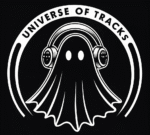What is Spatial Audio? A Guide for DJs & Artists in the Metaverse
For decades, we’ve experienced music in stereo—a flat, left-to-right soundscape. But as digital worlds and virtual events become more common, a new question arises: what does the future sound like? The answer is spatial audio.
If you’re a DJ, artist, or producer, understanding this technology is no longer optional. It’s your ticket to creating truly immersive experiences that captivate audiences.
So, What Exactly is Spatial Audio?
Imagine you’re in a room with a band. The drums are in front of you, the guitarist is to your left, and the singer is right at the center. You can pinpoint where every sound is coming from. That is spatial audio.
Instead of just left and right channels, spatial audio uses technology to place sounds in a 3D sphere around the listener. It creates a sense of depth, height, and space that traditional stereo can’t replicate. When you turn your head, the soundscape intelligently adjusts, just like in real life.
The Key Technologies Explained Simply
You’ve probably seen these logos, but what do they mean?
- Dolby Atmos: Think of it as “sound objects.” Instead of assigning a sound to a specific speaker, Dolby Atmos allows an engineer to place a sound (like a synth stab) as an “object” anywhere in 3D space. The system then intelligently renders it for any speaker setup, from a massive club system to headphones.
- Sony 360 Reality Audio: This technology is built on a similar object-based principle but is heavily optimized for creating a “live concert” feel through headphones. It aims to put you right in the middle of the performance.
- Ambisonics: This is a more technical, open-source format popular in VR and gaming. It captures a full 360-degree soundfield from a single point, making it perfect for creating realistic virtual environments.
Why Should DJs and Artists Care?
1. A Major Competitive Edge: In a crowded market, a track mixed in Dolby Atmos or a DJ set designed for a virtual space instantly stands out. It shows you are technically skilled and focused on the future.
2. Unforgettable Live Experiences: Imagine DJing in a virtual club where you can make a synth riser fly over the audience’s head or a bass drop feel like it’s coming from beneath the floor. This is the new level of crowd control.
3. New Monetization Opportunities: As virtual events, immersive gaming, and VR experiences become more popular, the demand for high-quality spatial audio is exploding.
How to Get Started
While professional spatial mixing can be complex, you don’t have to become an expert overnight. DAWs like Logic Pro have Dolby Atmos mixing built-in, and tools are available for Ableton and other platforms.
But the easiest way to enter this market is to start with professionally produced tracks that are already mixed for immersive environments.
Conclusion
Spatial audio isn’t a gimmick; it’s the natural evolution of sound for an increasingly digital world. By embracing it now, you’re not just future-proofing your music—you’re becoming a pioneer of the next sonic frontier.
Ready to hear the difference? Explore our exclusive collection of Metaverse & VR Audio tracks and bring your sound into the next dimension.

